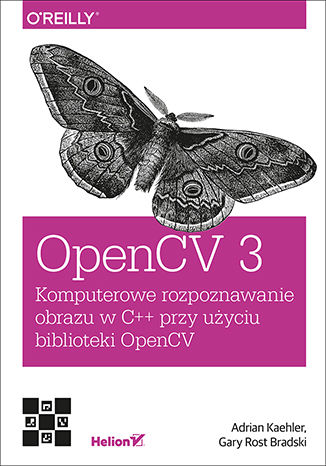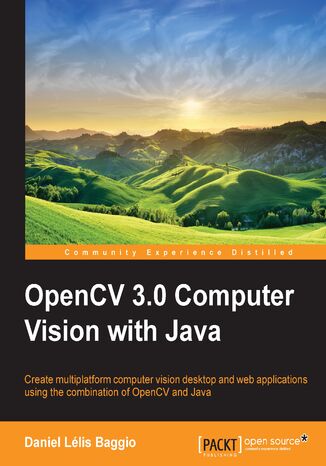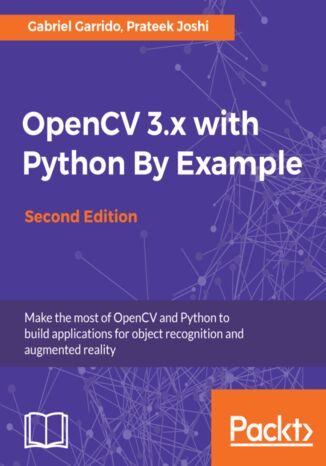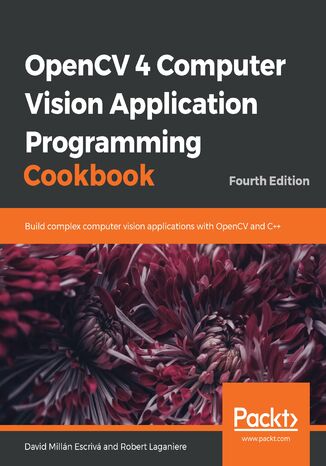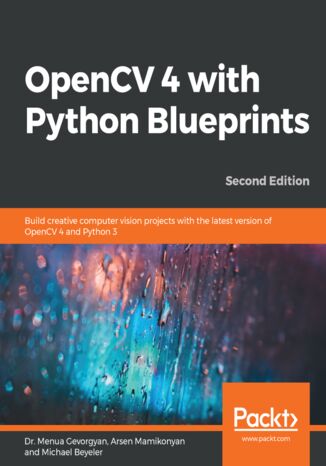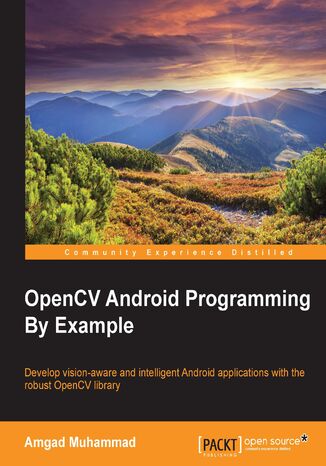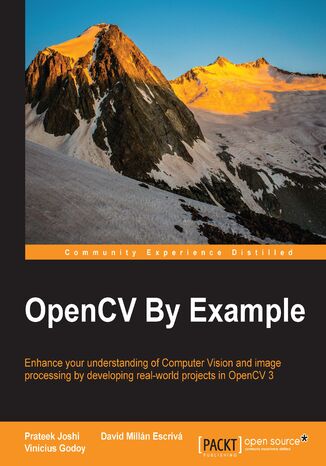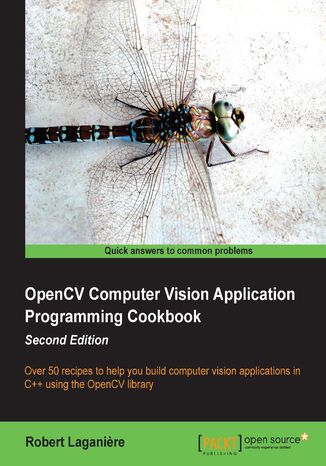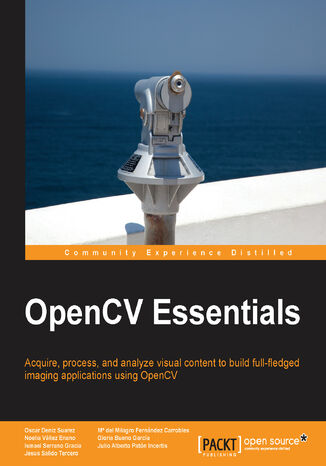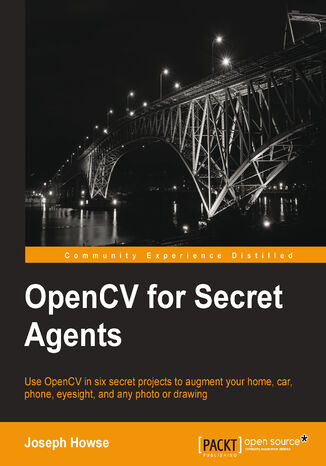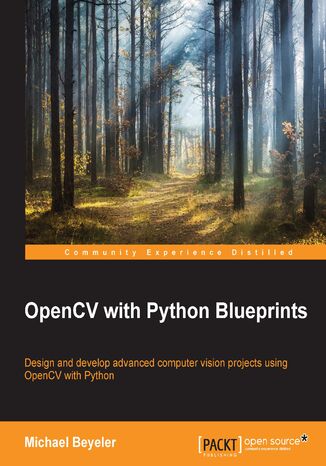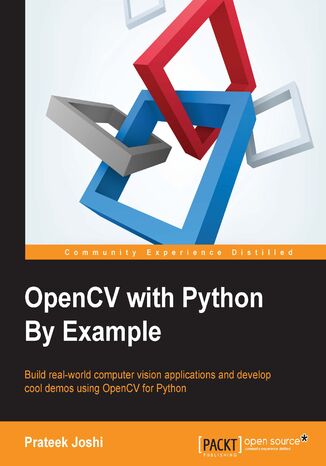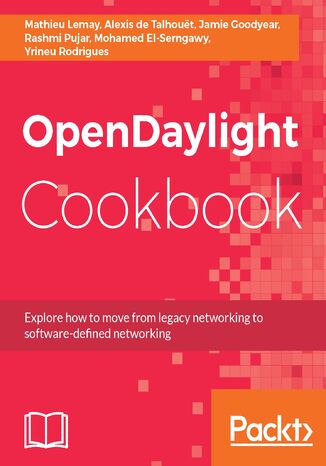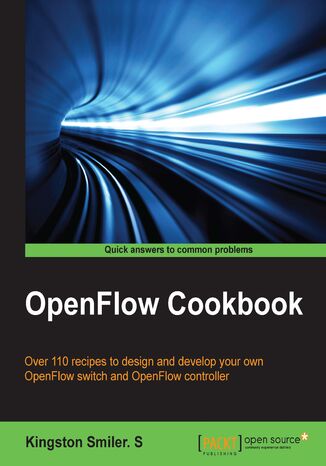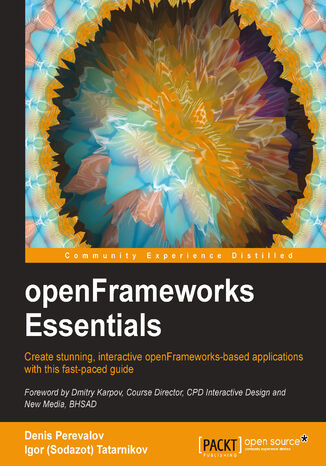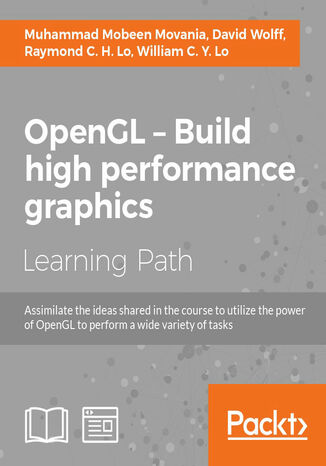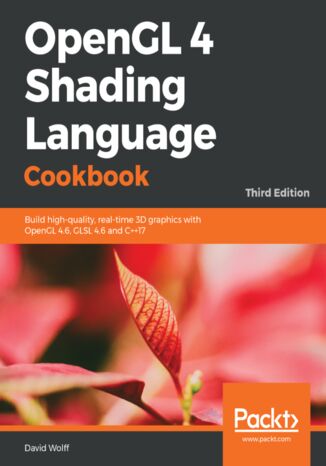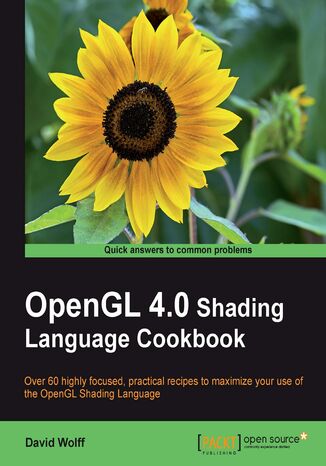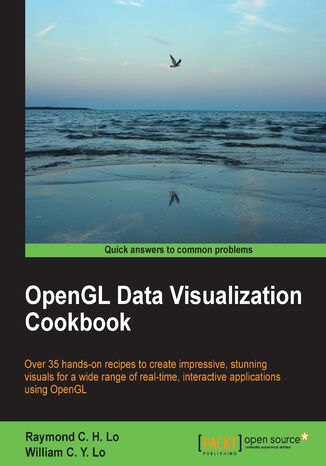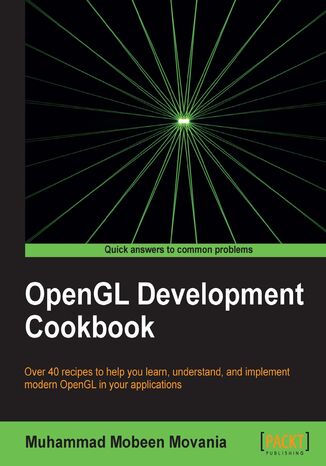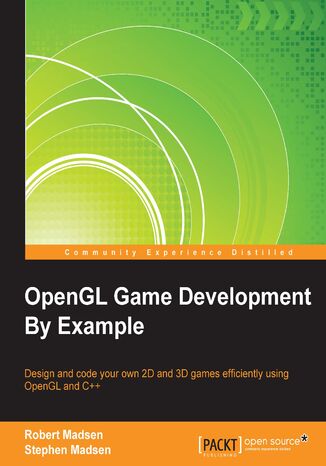Categories
-
- Bitcoin
- Businesswoman
- Coaching
- Controlling
- E-business
- Economy
- Finances
- Stocks and investments
- Personal competence
- Computer in the office
- Communication and negotiation
- Small company
- Marketing
- Motivation
- Multimedia trainings
- Real estate
- Persuasion and NLP
- Taxes
- Social policy
- Guides
- Presentations
- Leadership
- Public Relation
- Reports, analyses
- Secret
- Social Media
- Sales
- Start-up
- Your career
- Management
- Project management
- Human Resources
-
- Architektura i wnętrza
- Health and Safety
- Biznes i Ekonomia
- Home and garden
- E-business
- Ekonomia i finanse
- Esoterecism
- Finances
- Personal finance
- Business
- Photography
- Computer science
- HR & Payroll
- For women
- Computers, Excel
- Accounts
- Culture and literature
- Scientific and academic
- Environmental protection
- Opinion-forming
- Education
- Taxes
- Travelling
- Psychology
- Religion
- Agriculture
- Book and press market
- Transport and Spedition
- Healthand beauty
-
- Office applications
- Data bases
- Bioinformatics
- IT business
- CAD/CAM
- Digital Lifestyle
- DTP
- Electronics
- Digital photography
- Computer graphics
- Games
- Hacking
- Hardware
- IT w ekonomii
- Scientific software package
- School textbooks
- Computer basics
- Programming
- Mobile programming
- Internet servers
- Computer networks
- Start-up
- Operational systems
- Artificial intelligence
- Technology for children
- Webmastering
-
- Antology
- Ballade
- Biographies and autobiographies
- For adults
- Dramas
- Diaries, memoirs, letters
- Epic, epopee
- Essay
- Fantasy and science fiction
- Feuilletons
- Work of fiction
- Humour and satire
- Other
- Classical
- Crime fiction
- Non-fiction
- Fiction
- Mity i legendy
- Nobelists
- Novellas
- Moral
- Okultyzm i magia
- Short stories
- Memoirs
- Travelling
- Narrative poetry
- Poetry
- Politics
- Popular science
- Novel
- Historical novel
- Prose
- Adventure
- Journalism, publicism
- Reportage novels
- Romans i literatura obyczajowa
- Sensational
- Thriller, Horror
- Interviews and memoirs
-
- Archeology
- Bibliotekoznawstwo
- Cinema studies
- Philology
- Polish philology
- Philosophy
- Finanse i bankowość
- Geography
- Economy
- Trade. World economy
- History and archeology
- History of art and architecture
- Cultural studies
- Linguistics
- Literary studies
- Logistics
- Maths
- Medicine
- Humanities
- Pedagogy
- Educational aids
- Popular science
- Other
- Psychology
- Sociology
- Theatre studies
- Theology
- Economic theories and teachings
- Transport i spedycja
- Physical education
- Zarządzanie i marketing
-
- Health and Safety
- History
- Road Code. Driving license
- Law studies
- Healthcare
- General. Compendium of knowledge
- Academic textbooks
- Other
- Construction and local law
- Civil law
- Financial law
- Economic law
- Economic and trade law
- Criminal law
- Criminal law. Criminal offenses. Criminology
- International law
- International law
- Health care law
- Educational law
- Tax law
- Labor and social security law
- Public, constitutional and administrative law
- Family and Guardianship Code
- agricultural law
- Social law, labour law
- European Union law
- Industry
- Agricultural and environmental
- Dictionaries and encyclopedia
- Public procurement
- Management
-
- Africa
- Albums
- Southern America
- North and Central America
- Australia, New Zealand, Oceania
- Austria
- Asia
- Balkans
- Middle East
- Bulgary
- China
- Croatia
- The Czech Republic
- Denmark
- Egipt
- Estonia
- Europe
- France
- Mountains
- Greece
- Spain
- Holand
- Iceland
- Lithuania
- Latvia
- Mapy, Plany miast, Atlasy
- Mini travel guides
- Germany
- Norway
- Active travelling
- Poland
- Portugal
- Other
- Przewodniki po hotelach i restauracjach
- Russia
- Romania
- Slovakia
- Slovenia
- Switzerland
- Sweden
- World
- Turkey
- Ukraine
- Hungary
- Great Britain
- Italy
-
- Philosophy of life
- Kompetencje psychospołeczne
- Interpersonal communication
- Mindfulness
- General
- Persuasion and NLP
- Academic psychology
- Psychology of soul and mind
- Work psychology
- Relacje i związki
- Parenting and children psychology
- Problem solving
- Intellectual growth
- Secret
- Sexapeal
- Seduction
- Appearance and image
- Philosophy of life
-
- Bitcoin
- Businesswoman
- Coaching
- Controlling
- E-business
- Economy
- Finances
- Stocks and investments
- Personal competence
- Communication and negotiation
- Small company
- Marketing
- Motivation
- Real estate
- Persuasion and NLP
- Taxes
- Social policy
- Guides
- Presentations
- Leadership
- Public Relation
- Secret
- Social Media
- Sales
- Start-up
- Your career
- Management
- Project management
- Human Resources
-
- Antology
- Ballade
- Biographies and autobiographies
- For adults
- Dramas
- Diaries, memoirs, letters
- Epic, epopee
- Essay
- Fantasy and science fiction
- Feuilletons
- Work of fiction
- Humour and satire
- Other
- Classical
- Crime fiction
- Non-fiction
- Fiction
- Mity i legendy
- Nobelists
- Novellas
- Moral
- Okultyzm i magia
- Short stories
- Memoirs
- Travelling
- Poetry
- Politics
- Popular science
- Novel
- Historical novel
- Prose
- Adventure
- Journalism, publicism
- Reportage novels
- Romans i literatura obyczajowa
- Sensational
- Thriller, Horror
- Interviews and memoirs
-
- Philosophy of life
- Interpersonal communication
- Mindfulness
- General
- Persuasion and NLP
- Academic psychology
- Psychology of soul and mind
- Work psychology
- Relacje i związki
- Parenting and children psychology
- Problem solving
- Intellectual growth
- Secret
- Sexapeal
- Seduction
- Appearance and image
- Philosophy of life
OpenCV 3. Komputerowe rozpoznawanie obrazu w C++ przy użyciu biblioteki OpenCV
Komputerowe rozpoznawanie obrazów przechodzi dziś fazę burzliwego rozwoju. Przyczyniają się do tego ogromna popularność cyfrowych aparatów fotograficznych, wielka liczba grafik zgromadzonych w obszernych internetowych bazach danych, a przede wszystkim coraz doskonalsze algorytmy przetwarzania obrazu. W rozwijaniu tej technologii wielką rolę odegrała biblioteka OpenCV, usprawniając pracę setek tysięcy ludzi. OpenCV 3.x ułatwia efektywne rozwijanie projektów dzięki opartej na języku C++ spójnej architekturze, która doskonale działa na wielu platformach. Ta książka, przeznaczona dla osób znających język C++, jest praktycznym wprowadzeniem do otwartej biblioteki OpenCV w wersji 3.x. Zawiera też podstawowe informacje na temat komputerowego rozpoznawania obrazu, co powinno ułatwić efektywne posługiwanie się tą biblioteką. Sama biblioteka OpenCV została przedstawiona w sposób umożliwiający bardzo szybkie rozpoczęcie pracy. Książka ułatwia naturalne zrozumienie działania algorytmów, dzięki czemu projektowanie i debugowanie aplikacji nie powinno sprawiać problemów. W ten sposób książka ta staje się świetnym przygotowaniem do zgłębienia bardziej zaawansowanych zagadnień komputerowego rozpoznawania obrazu i uczenia maszynowego. Najważniejsze zagadnienia: Przegląd biblioteki OpenCV i zawarte w niej funkcje Praca z plikami obrazów, filmów i danych oraz przekształcanie obrazów Ważniejsze algorytmy do pracy na obrazach Punkty kluczowe: wykrywanie i filtrowanie Trójwymiarowe widzenie, ruch, określanie pozycji Uczenie maszyn w OpenCV OpenCV: poznaj i stosuj algorytmy przetwarzania obrazów! Adrian Kaehler jest naukowcem i założycielem start-upów. Zajmuje się uczeniem maszynowym, modelowaniem statystycznym i komputerowym rozpoznawaniem obrazu. Pracuje w Intel Corporation i w Laboratorium Sztucznej Inteligencji Uniwersytetu Stanforda. Współzakładał Silicon Valley Deep Learning Group. Gary Rost Bradski jest naukowcem i konsultantem. Zajmuje się robotyką, uczeniem maszynowym i komputerowym rozpoznawaniem obrazów. Pracuje w Laboratorium Sztucznej Inteligencji Uniwersytetu Stanforda. Współtworzył takie biblioteki jak Open Source Computer Vision Library, Machine Learning Library i Probabilistic Network Library (PNL).
Gabriel Garrido Calvo, Prateek Joshi
Computer vision is found everywhere in modern technology. OpenCV for Python enables us to run computer vision algorithms in real time. With the advent of powerful machines, we have more processing power to work with. Using this technology, we can seamlessly integrate our computer vision applications into the cloud. Focusing on OpenCV 3.x and Python 3.6, this book will walk you through all the building blocks needed to build amazing computer vision applications with ease.We start off by manipulating images using simple filtering and geometric transformations. We then discuss affine and projective transformations and see how we can use them to apply cool advanced manipulations to your photos like resizing them while keeping the content intact or smoothly removing undesired elements. We will then cover techniques of object tracking, body part recognition, and object recognition using advanced techniques of machine learning such as artificial neural network. 3D reconstruction and augmented reality techniques are also included. The book covers popular OpenCV libraries with the help of examples.This book is a practical tutorial that covers various examples at different levels, teaching you about the different functions of OpenCV and their actual implementation. By the end of this book, you will have acquired the skills to use OpenCV and Python to develop real-world computer vision applications.
David Millán Escrivá, Robert Laganiere
OpenCV is an image and video processing library used for all types of image and video analysis. Throughout the book, you'll work with recipes to implement a variety of tasks. With 70 self-contained tutorials, this book examines common pain points and best practices for computer vision (CV) developers. Each recipe addresses a specific problem and offers a proven, best-practice solution with insights into how it works, so that you can copy the code and configuration files and modify them to suit your needs.This book begins by guiding you through setting up OpenCV, and explaining how to manipulate pixels. You'll understand how you can process images with classes and count pixels with histograms. You'll also learn detecting, describing, and matching interest points. As you advance through the chapters, you'll get to grips with estimating projective relations in images, reconstructing 3D scenes, processing video sequences, and tracking visual motion. In the final chapters, you'll cover deep learning concepts such as face and object detection.By the end of this book, you'll have the skills you need to confidently implement a range of computer vision algorithms to meet the technical requirements of your complex CV projects.
OpenCV 4 is a collection of image processing functions and computer vision algorithms. It is open source, supports many programming languages and platforms, and is fast enough for many real-time applications. With this handy library, you’ll be able to build a variety of impressive gadgets.OpenCV 4 for Secret Agents features a broad selection of projects based on computer vision, machine learning, and several application frameworks. To enable you to build apps for diverse desktop systems and Raspberry Pi, the book supports multiple Python versions, from 2.7 to 3.7. For Android app development, the book also supports Java in Android Studio, and C# in the Unity game engine. Taking inspiration from the world of James Bond, this book will add a touch of adventure and computer vision to your daily routine. You’ll be able to protect your home and car with intelligent camera systems that analyze obstacles, people, and even cats. In addition to this, you’ll also learn how to train a search engine to praise or criticize the images that it finds, and build a mobile app that speaks to you and responds to your body language.By the end of this book, you will be equipped with the knowledge you need to advance your skills as an app developer and a computer vision specialist.
Dr. Menua Gevorgyan, Arsen Mamikonyan, Michael Beyeler
OpenCV is a native cross-platform C++ library for computer vision, machine learning, and image processing. It is increasingly being adopted in Python for development. This book will get you hands-on with a wide range of intermediate to advanced projects using the latest version of the framework and language, OpenCV 4 and Python 3.8, instead of only covering the core concepts of OpenCV in theoretical lessons. This updated second edition will guide you through working on independent hands-on projects that focus on essential OpenCV concepts such as image processing, object detection, image manipulation, object tracking, and 3D scene reconstruction, in addition to statistical learning and neural networks.You’ll begin with concepts such as image filters, Kinect depth sensor, and feature matching. As you advance, you’ll not only get hands-on with reconstructing and visualizing a scene in 3D but also learn to track visually salient objects. The book will help you further build on your skills by demonstrating how to recognize traffic signs and emotions on faces. Later, you’ll understand how to align images, and detect and track objects using neural networks.By the end of this OpenCV Python book, you’ll have gained hands-on experience and become proficient at developing advanced computer vision apps according to specific business needs.
Amgad Muhammad, Erik Hellman, Erik A Westenius, Amgad M Ahmed Muhammad
Starting from the basics of computer vision and OpenCV, we'll take you all the way to creating exciting applications. You will discover that, though computer vision is a challenging subject, the ideas and algorithms used are simple and intuitive, and you will appreciate the abstraction layer that OpenCV uses to do the heavy lifting for you. Packed with many examples, the book will help you understand the main data structures used within OpenCV, and how you can use them to gain performance boosts. Next we will discuss and use several image processing algorithms such as histogram equalization, filters, and color space conversion. You then will learn about image gradients and how they are used in many shape analysis techniques such as edge detection, Hough Line Transform, and Hough Circle Transform. In addition to using shape analysis to find things in images, you will learn how to describe objects in images in a more robust way using different feature detectors and descriptors. By the end of this book, you will be able to make intelligent decisions using the famous Adaboost learning algorithm.
Prateek Joshi, David Millán Escrivá, Vinícius G. Mendonça
Open CV is a cross-platform, free-for-use library that is primarily used for real-time Computer Vision and image processing. It is considered to be one of the best open source libraries that helps developers focus on constructing complete projects on image processing, motion detection, and image segmentation.Whether you are completely new to the concept of Computer Vision or have a basic understanding of it, this book will be your guide to understanding the basic OpenCV concepts and algorithms through amazing real-world examples and projects.Starting from the installation of OpenCV on your system and understanding the basics of image processing, we swiftly move on to creating optical flow video analysis or text recognition in complex scenes, and will take you through the commonly used Computer Vision techniques to build your own Open CV projects from scratch.By the end of this book, you will be familiar with the basics of Open CV such as matrix operations, filters, and histograms, as well as more advanced concepts such as segmentation, machine learning, complex video analysis, and text recognition.
OpenCV: Computer Vision Projects with Python. Develop computer vision applications with OpenCV
Michael Beyeler, Prateek Joshi, Joseph Howse
OpenCV is a state-of-art computer vision library that allows a great variety of image and video processing operations. OpenCV for Python enables us to run computer vision algorithms in real time.This learning path proposes to teach the following topics. First, we will learn how to get started with OpenCV and OpenCV3’s Python API, and develop a computer vision application that tracks body parts. Then, we will build amazing intermediate-level computer vision applications such as making an object disappear from an image, identifying different shapes, reconstructing a 3D map from images , and building an augmented reality application, Finally, we’ll move to more advanced projects such as hand gesture recognition, tracking visually salient objects, as well as recognizing traffic signs and emotions on faces using support vector machines and multi-layer perceptrons respectively. This Learning Path combines some of the best that Packt has to offer in one complete, curated package. It includes content from the following Packt products:• OpenCV Computer Vision with Python by Joseph Howse • OpenCV with Python By Example by Prateek Joshi• OpenCV with Python Blueprints by Michael Beyeler
OpenDaylight Cookbook. Deploy and operate software-defined networking in your organization
Alexis de Talhouët, Mathieu Lemay, Mohamed Elserngawy, Jamie Goodyear, ...
OpenDaylight is an open source platform to program and build Software-Defined Networks (SDN). Its aim is to accelerate the adoption of SDN and NFV. With above 90 practical recipes, this book will help you to solve day-to-day problems and maintenance tasks surrounding OpenDaylight’s implementation.This book starts with the OpenDaylight fundamentals. In this book, you will gain a sound understanding of the methods and techniques when deploying OpenDaylight in production environment. Later on, you will learn to create a Service Chain using SFC. This book will address common problems and day-to-day maintenance tasks with OpenDaylight. We’ll also will teach you how to interact with OpenDaylight APIs and use the necessary tools to simulate networks. You will also explore how to create your own branded OpenDaylight along with authorising and authenticating users using OpenDaylight Identity Manager.By the end of this book, you will have the necessary skills to operate an OpenDaylight SDN environment.
William Lo, Muhammad Mobeen Movania, Raymond Chun Hing Lo
OpenGL is a fully functional, cross-platform API widely adopted across the industry for 2D and 3D graphics development. It is mainly used for game development and applications, but is equally popular in a vast variety of additional sectors. This practical course will help you gain proficiency with OpenGL and build compelling graphics for your games and applications. OpenGL Development Cookbook – This is your go-to guide to learn graphical programming techniques and implement 3D animations with OpenGL. This straight-talking Cookbook is perfect for intermediate C++ programmers who want to exploit the full potential of OpenGL. Full of practical techniques for implementing amazing computer graphics and visualizations using OpenGL. OpenGL 4.0 Shading Language Cookbook, Second Edition – With Version 4, the language has been further refined to provide programmers with greater power and flexibility, with new stages such as tessellation and compute. OpenGL Shading Language 4 Cookbook is a practical guide that takes you from the fundamentals of programming with modern GLSL and OpenGL, through to advanced techniques.OpenGL Data Visualization Cookbook - This easy-to-follow, comprehensive Cookbook shows readers how to create a variety of real-time, interactive data visualization tools. Each topic is explained in a step-by-step format. A range of hot topics is included, including stereoscopic 3D rendering and data visualization on mobile/wearable platforms. By the end of this guide, you will be equipped with the essential skills to develop a wide range of impressive OpenGL-based applications for your unique data visualization needs.This Learning Path combines some of the best that Packt has to offer in one complete, curated package. It includes content from the following Packt products, OpenGL Development Cookbook by Muhammad Mobeen Movania, OpenGL 4.0 Shading Language Cookbook, Second Edition by David Wolff, OpenGL Data Visualization Cookbook by Raymond C. H. Lo, William C. Y. Lo
OpenGL Shading Language (GLSL) is a programming language used for customizing parts of the OpenGL graphics pipeline that were formerly fixed-function, and are executed directly on the GPU. It provides programmers with unprecedented flexibility for implementing effects and optimizations utilizing the power of modern GPUs. With Version 4, the language has been further refined to provide programmers with greater power and flexibility, with new stages such as tessellation and compute.OpenGL 4 Shading Language Cookbook provides easy-to-follow examples that first walk you through the theory and background behind each technique, and then go on to provide and explain the GLSL and OpenGL code needed to implement it. Beginner level through to advanced techniques are presented including topics such as texturing, screen-space techniques, lighting, shading, tessellation shaders, geometry shaders, compute shaders, and shadows.OpenGL Shading Language 4 Cookbook is a practical guide that takes you from the fundamentals of programming with modern GLSL and OpenGL, through to advanced techniques. The recipes build upon each other and take you quickly from novice to advanced level code.You'll see essential lighting and shading techniques; examples that demonstrate how to make use of textures for a wide variety of effects and as part of other techniques; examples of screen-space techniques including HDR rendering, bloom, and blur; shadowing techniques; tessellation, geometry, and compute shaders; how to use noise effectively; and animation with particle systems.OpenGL Shading Language 4 Cookbook provides examples of modern shading techniques that can be used as a starting point for programmers to expand upon to produce modern, interactive, 3D computer graphics applications.
OpenGL 4 Shading Language Cookbook, Third Edition provides easy-to-follow recipes that first walk you through the theory and background behind each technique, and then proceed to showcase and explain the GLSL and OpenGL code needed to implement them.The book begins by familiarizing you with beginner-level topics such as compiling and linking shader programs, saving and loading shader binaries (including SPIR-V), and using an OpenGL function loader library. We then proceed to cover basic lighting and shading effects. After that, you'll learn to use textures, produce shadows, and use geometry and tessellation shaders. Topics such as particle systems, screen-space ambient occlusion, deferred rendering, depth-based tessellation, and physically based rendering will help you tackle advanced topics.OpenGL 4 Shading Language Cookbook, Third Edition also covers advanced topics such as shadow techniques (including the two of the most common techniques: shadow maps and shadow volumes). You will learn how to use noise in shaders and how to use compute shaders.The book provides examples of modern shading techniques that can be used as a starting point for programmers to expand upon to produce modern, interactive, 3D computer-graphics applications.
The OpenGL Shading Language (GLSL) is a programming language used for customizing parts of the OpenGL graphics pipeline that were formerly fixed-function, and are executed directly on the GPU. It provides programmers with unprecedented flexibility for implementing effects and optimizations utilizing the power of modern GPUs. With version 4.0, the language has been further refined to provide programmers with greater flexibility, and additional features have been added such as an entirely new stage called the tessellation shader.The OpenGL Shading Language 4.0 Cookbook provides easy-to-follow examples that first walk you through the theory and background behind each technique then go on to provide and explain the GLSL and OpenGL code needed to implement it. Beginning level through to advanced techniques are presented including topics such as texturing, screen-space techniques, lighting, shading, tessellation shaders, geometry shaders, and shadows.The OpenGL Shading Language 4.0 Cookbook is a practical guide that takes you from the basics of programming with GLSL 4.0 and OpenGL 4.0, through basic lighting and shading techniques, to more advanced techniques and effects. It presents techniques for producing basic lighting and shading effects; examples that demonstrate how to make use of textures for a wide variety of effects and as part of other techniques; examples of screen-space techniques, shadowing, tessellation and geometry shaders, noise, and animation.The OpenGL Shading Language 4.0 Cookbook provides examples of modern shading techniques that can be used as a starting point for programmers to expand upon to produce modern, interactive, 3D computer graphics applications.
William Lo, Raymond Chun Hing Lo
OpenGL is a great multi-platform, cross-language, and hardware-accelerated graphics interface for visualizing large 2D and 3D datasets. Data visualization has become increasingly challenging using conventional approaches as datasets become larger and larger, especially with the Big Data evolution. From a mobile device to a sophisticated high-performance computing cluster, OpenGL libraries provide developers with an easy-to-use interface to create stunning visuals in 3D in real time for a wide range of interactive applications.This book provides a series of easy-to-follow, hands-on tutorials to create appealing OpenGL-based visualization tools with minimal development time. We will first illustrate how to quickly set up the development environment in Windows, Mac OS X, and Linux. Next, we will demonstrate how to visualize data for a wide range of applications using OpenGL, starting from simple 2D datasets to increasingly complex 3D datasets with more advanced techniques. Each chapter addresses different visualization problems encountered in real life and introduces the relevant OpenGL features and libraries in a modular fashion.By the end of this book, you will be equipped with the essential skills to develop a wide range of impressive OpenGL-based applications for your unique data visualization needs, on platforms ranging from conventional computers to the latest mobile/wearable devices.
OpenGL is the leading cross-language, multi-platform API used by masses of modern games and applications in a vast array of different sectors. Developing graphics with OpenGL lets you harness the increasing power of GPUs and really take your visuals to the next level.OpenGL Development Cookbook is your guide to graphical programming techniques to implement 3D mesh formats and skeletal animation to learn and understand OpenGL.OpenGL Development Cookbook introduces you to the modern OpenGL. Beginning with vertex-based deformations, common mesh formats, and skeletal animation with GPU skinning, and going on to demonstrate different shader stages in the graphics pipeline. OpenGL Development Cookbook focuses on providing you with practical examples on complex topics, such as variance shadow mapping, GPU-based paths, and ray tracing. By the end you will be familiar with the latest advanced GPU-based volume rendering techniques.
OpenGL is one of the most popular rendering SDKs used to develop games. OpenGL has been used to create everything from 3D masterpieces running on desktop computers to 2D puzzles running on mobile devices. You will learn to apply both 2D and 3D technologies to bring your game idea to life. There is a lot more to making a game than just drawing pictures and that is where this book is unique! It provides a complete tutorial on designing and coding games from the setup of the development environment to final credits screen, through the creation of a 2D and 3D game.The book starts off by showing you how to set up a development environment using Visual Studio, and create a code framework for your game. It then walks you through creation of two games–a 2D platform game called Roboracer 2D and a 3D first-person space shooter game–using OpenGL to render both 2D and 3D graphics using a 2D coordinate system. You'll create sprite classes, render sprites and animation, and navigate and control the characters. You will also learn how to implement input, use audio, and code basic collision and physics systems. From setting up the development environment to creating the final credits screen, the book will take you through the complete journey of creating a game engine that you can extend to create your own games.

